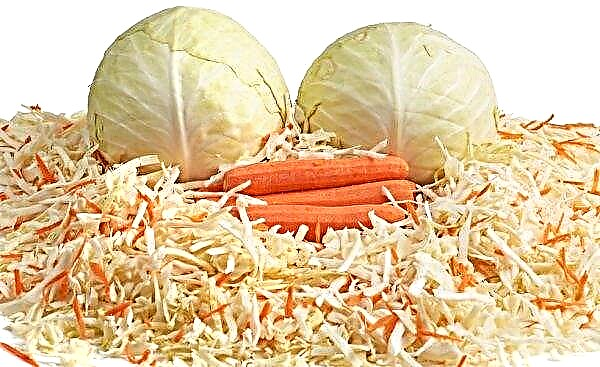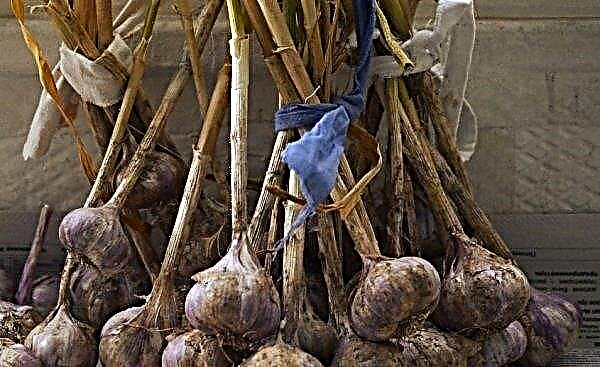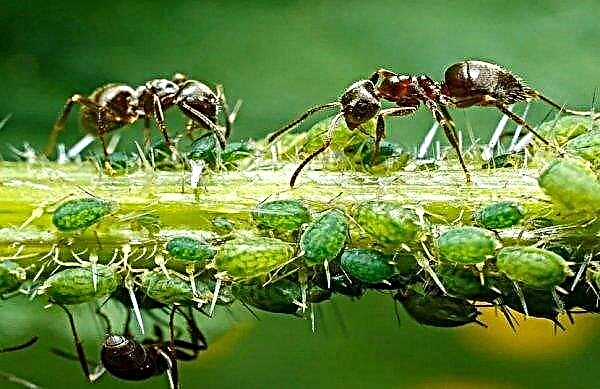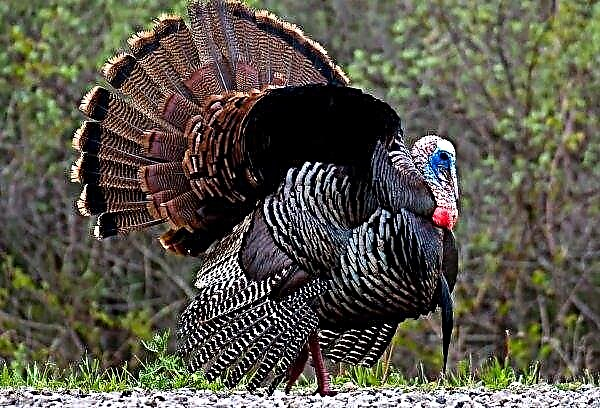There are many varieties of mushrooms on the planet, many of which are still not fully understood. Among the edible and poisonous, there is one category that deserves special attention - this is the Svinushkov family, namely its edible and poisonous representatives. In mixed, deciduous and coniferous forests, real and false pigs are found, the distinctive features of which should be known to every mushroom picker.
Edible fat pig
Fat pig belongs to conditionally edible mushrooms that can be eaten after heat treatment. Nevertheless, a considerable number of mushroom pickers are afraid to collect this “forest dweller”, having scanty information about how harmless it is. Indeed, in Western countries they are wary of it, indicating that the effect of the fungus on the human body has not been fully studied.
Mushroom pig fat looks rather fleshy. According to the scientific description, his hat has a diameter of 8 to 20 cm, but there are also larger specimens with a diameter of up to 30 cm. The surface of the hat has an olive-brown or brown color. The upper film in young and old mushrooms differs in structure. Young mushrooms have a velvety, pleasant to the touch felt hat. With age, it becomes dry, naked, often cracking. The form also changes in the process of ripening: being initially slightly convex, it gradually straightens out and, by maturity, acquires a linguistic disproportionate form.
The underside of the cap is covered with yellowish plates. If the mushroom is damaged or squeezed, the plates darken. The leg of the edible pig is also quite fleshy and thick (in fact, the name of the fungus has also gone from dimensions). It is relatively low - up to 9 cm, has a dark brown color.Did you know? The chemical composition of a fat pig contains atromentin — a substance that has antibiotic properties and has an antitumor effect.

Despite all the beauty and some useful qualities, with the use of these mushrooms you need to be extremely careful. In addition to useful components, they also contain toxic substances that can cause harm when ingested in large quantities, causing poisoning. In addition, mushroom dishes are a heavy form of food that is difficult to digest by the body, so you need to eat them in moderation.
It is worth noting that a real pig is a rare type of mushroom that can be found exclusively in regions with a temperate climate. Prefers coniferous plantations, where there are rotten stumps, moss, uprooted trees.
Video: Edible fat pig
Poisonous thin pig
Information describing the fat pig was provided in order to demonstrate its differences from the false thin pig, which is considered more poisonous and you need to know how to cook it correctly. The people have a lot of names for the mushroom: filly, sow, pig's ear, etc. Previously, it belonged to conditionally edible fungi of the lower category, but, after scientific research carried out in the 50s of the last century, the fungus was classified as poisonous, although some mushroom pickers do not think so.
 Outwardly, mushrooms are somewhat similar, but they also have differences. In particular, in the photo you can see that the hat of the false pig looks much more accurate and proportional, without a characteristic “tongue”. Actually, among the people the mushroom was called the pork ear because of the similarity in shape. In addition, the hat is thinner, and with age it has a pale brown, faded shade. Its diameter does not exceed 15 cm.
Outwardly, mushrooms are somewhat similar, but they also have differences. In particular, in the photo you can see that the hat of the false pig looks much more accurate and proportional, without a characteristic “tongue”. Actually, among the people the mushroom was called the pork ear because of the similarity in shape. In addition, the hat is thinner, and with age it has a pale brown, faded shade. Its diameter does not exceed 15 cm.
A noticeable difference lies in the legs of mushrooms - in a false pig, it is much thinner, to the bottom, most often, it narrows. It does not have a contrasting shade, but practically merges with the beige lamellar inner surface of the cap, it is lighter.
Did you know? Toxins can be removed from mushrooms using table salt. First, the mushrooms are soaked in salted water for 24 hours, periodically changing the solution, and then boil, changing the salt water until it becomes light.
Toxicity
As mentioned earlier, there are mushroom pickers who continue to collect thin sows and prepare various dishes from them. Mushrooms are mostly pickled, but they can also be fried or used as an ingredient for more complex recipes. Nevertheless, it is necessary to have an idea of the causes of toxicity in order to understand how dangerous the fungus can be.
The first thing to consider is that a thin pig is more capable of absorbing toxins and radioisotopes from the environment than other mushrooms, therefore it is impossible to collect it near roads, landfills, industrial enterprises.

The next point is the presence in the chemical composition of the thin muskarin sow, a toxic substance that is not destroyed even during cooking. This element has much in common with the toxin of red mushroom, which in itself scares off. Its amount in mushrooms depends to a greater extent on the place of growth and can reach a critical point, causing severe poisoning and even death due to consumption.
Another reason why a thin pig is classified as a poisonous mushroom is the presence of an antigen in the composition of the substance, which contributes to the formation of antibodies in the blood and can cause impaired renal function. But, it should be noted that to the end these data are not verified and require additional study. Despite this, it is better to be careful, because many mushrooms grow in the forests of Russia, which do not raise doubts about the taste and healthy qualities.
Video: Poison Thin Pig
Signs of thin pig poisoning
Symptoms of poisoning may vary in one case or another. It all depends on what exactly became the cause. Since, as mentioned earlier, some mushroom pickers continue to eat these mushrooms, different scenarios are possible.
The main reasons are:
- Mushrooms with a high amount of toxins are eaten. Moreover, depending on what harmful substance contains more, and the damage will be done to a greater extent to a specific organ (stomach, liver, kidneys, etc.).
- Incorrect cooking of mushrooms. If the pigs were not subjected to high-quality heat treatment, harmful bacteria can remain in them, which will continue to actively multiply in the body. More often this leads to a disease such as botulism, which affects the nervous system and organs of vision. In addition to the main symptoms of poisoning, a person may experience a change in the tone of the voice, swallowing reflex, etc.
- Eating old mushrooms or heavy metal salts (collected in dysfunctional places near the highway, railways, enterprises). The consequence may be a disturbance in the functioning of various organs.
- Individual intolerance. Some people are allergic to mushroom dishes, so if you have not tried them yet, start with very small doses.
 The older the mushroom, the more harmful substances it accumulates in itself.
The older the mushroom, the more harmful substances it accumulates in itself.
The primary signs of poisoning in all cases look approximately the same. The victim can identify symptoms such as:
- nausea, vomiting;
- severe abdominal pain;
- diarrhea;
- dizziness.

Having found such signs, you need to try to provide medical assistance to the patient as soon as possible. Otherwise, more complex processes in the body will start, which can lead to damage to internal organs, and sometimes to death.
At the stage of worsening, the patient may experience:
- weakness;
- thirst (during vomiting and diarrhea, dehydration occurs);
- increase in body temperature;
- chilled limbs;
- barely audible pulse.

In a neglected state, poisoning can lead to hemolysis - the destruction of red blood cells - red blood cells. As a result, numerous complications arise: shock, renal failure, malfunctioning of the respiratory tract, intravascular coagulation, etc.
First aid
The first thing to do if a person near you has signs of poisoning - immediately call an ambulance or deliver the patient yourself to the nearest medical facility. Until the doctor arrives, you can take some action. Everyone knows that the best way to help with poisoning is to cleanse the stomach.
The procedure allows you to remove the remnants of junk food from the body before the toxins are absorbed into the blood. To do this, it is necessary to drink the patient 1.5 liters of warm water (it is desirable that this is a light solution of potassium permanganate) and induce vomiting by pressing the root of the tongue. Such actions need to be repeated several times until there are no signs of food in the vomit.Important! It is not necessary to expect that mushroom poisoning itself will pass. Once in the bloodstream, the poison quickly spreads throughout the body, accumulates in the kidneys, liver, and affects the nervous system.

In parallel, a sorbent capable of absorbing toxins must be introduced into the body. The simplest and most affordable means is activated carbon, which is sold in any pharmacy. Its dose is calculated based on the weight of the person. For 1 kg, 1 g of the drug.
After such events, the patient should noticeably feel better. However, it should be noted that not every organism is responsive to such procedures. For example, they can harm people with low blood pressure. It is also dangerous to cause vomiting in a person who is losing consciousness as a result of poisoning.
Before the ambulance arrives, it is advisable to give the victim more fluid to make up for its loss that occurs during vomiting and diarrhea. It is best to make strong tea and give it chilled. You can also give a person normal cold water or mineral water without gas. It is strictly forbidden to engage in self-medication, to give the patient medications at his discretion, as this can cause additional complications.
Summing up, it should be noted that mushrooms, recognized by science as inedible, should not be eaten, as this can lead to serious poisoning. The false pig belongs to the category of such "suspicious" mushrooms. Despite the positive feedback from mushroom pickers, remember that each organism transfers this or that product in its own way, and think, first of all, about personal health.












